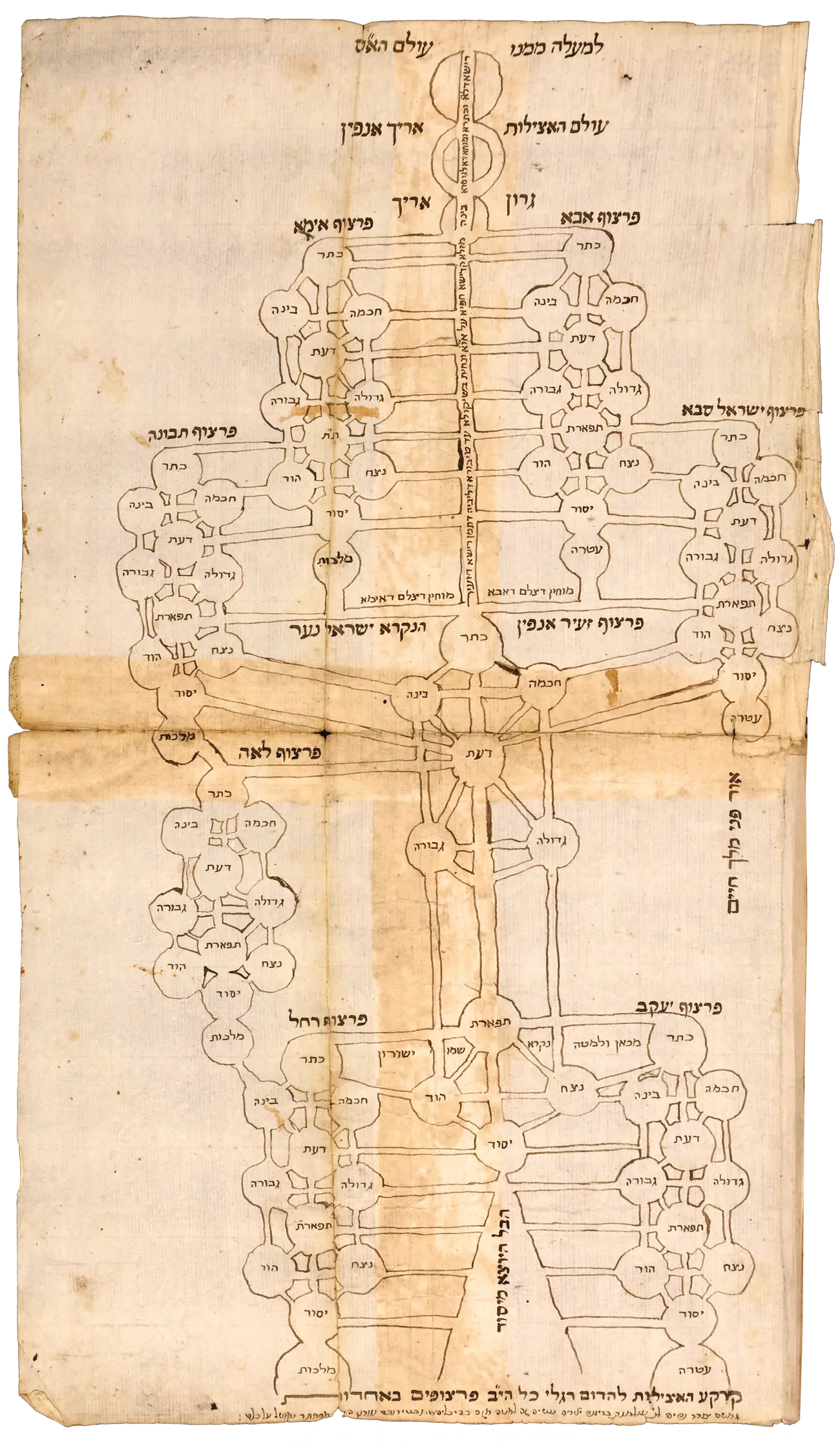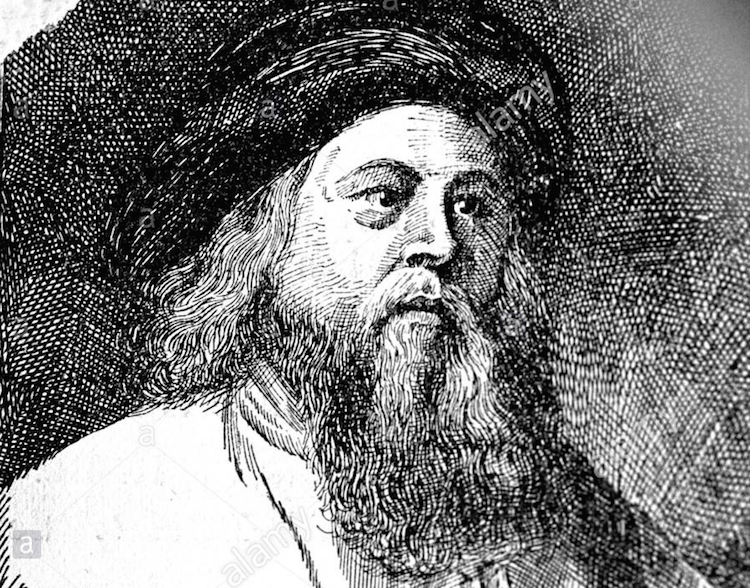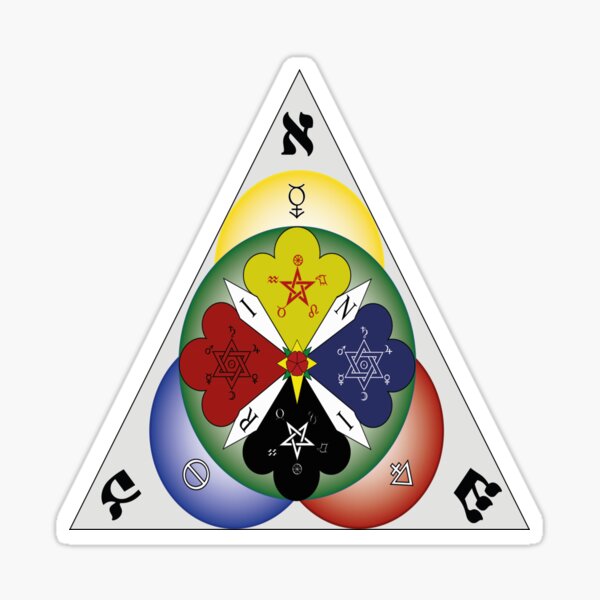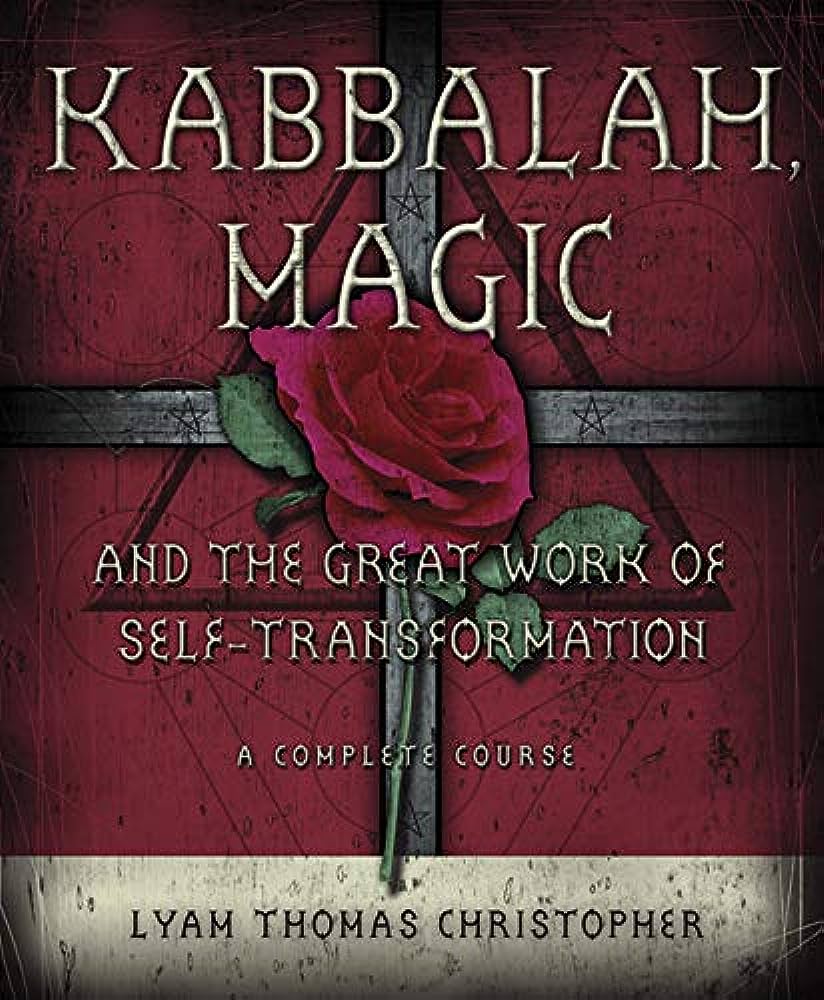Understanding Kabbalah - A Journey Into The Mystical Tradition
Rooted in ancient Jewish mysticism, Kabbalah provides a unique lens through which individuals can explore the mysteries of the universe and gain insights into the nature of existence. In this article, we will help you in understanding kabbalah, exploring its history, principles, practices, and contemporary relevance.
Author:Suleman ShahReviewer:Han JuFeb 06, 202310.8K Shares204.2K Views
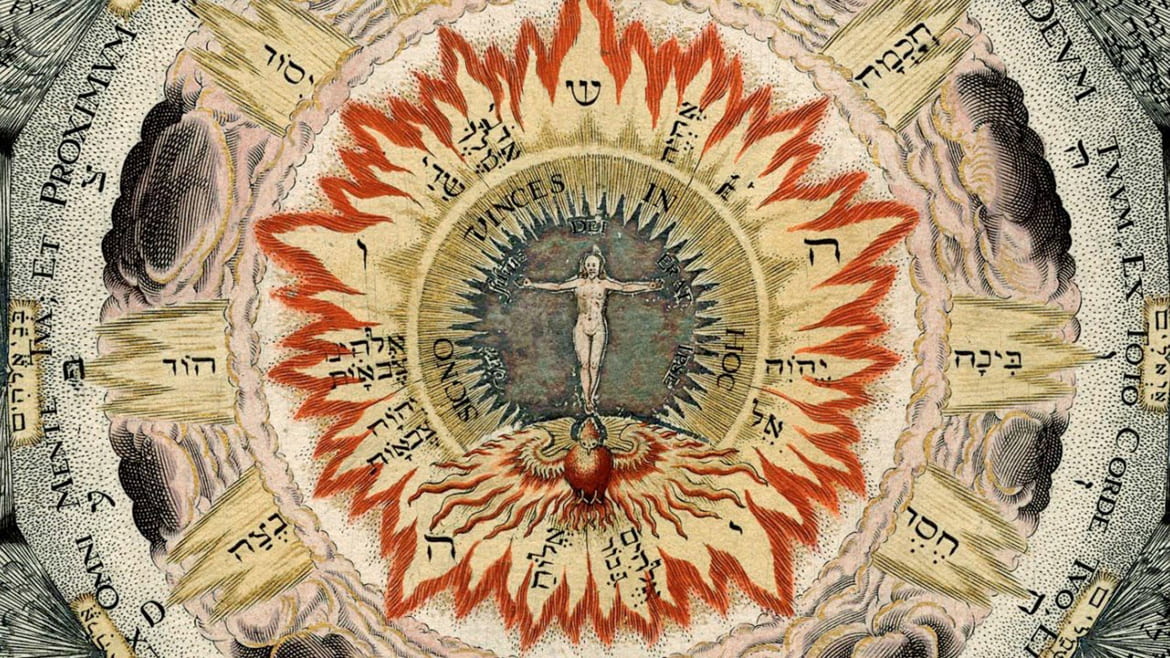
Kabbalah, often spelled as Qabbalah, is an esoteric and mystical tradition that has captivated the minds of seekers and scholars for centuries. Rooted in ancient Jewish mysticism, Kabbalah provides a unique lens through which individuals can explore the mysteries of the universe and gain insights into the nature of existence. In this article, we will help you in understanding kabbalah, exploring its history, principles, practices, and contemporary relevance.
Origins And History
The Jewish tradition of Kabbalah, which is sometimes referred to as "mysticism" or "occult knowledge," deals with the essence of God. Kabbalists hold that God works in strange ways, whether it involves a sacred text, an experience, or the way things are. The greatest intimacy with God, according to Kabbalists, can be gained by true knowledge and awareness of that inner, enigmatic process, which they also hold to be attainable.
This phenomena was distinct from earlier mystical traditions of Ashkenazic origin, which were mostly focused on strict piety and interpretive strategies used to unlock the deeper levels of meaning in official Jewish scriptures. It also stood apart from magical traditions, which were mostly focused on taming supernatural forces and using them to alter the physical universe. The magical power of language, however, is what these various strands of hidden Jewish traditions share.
Understanding Kabbalah Key Concepts
1. The Sephirot
At the heart of Kabbalah lies the concept of the Sephirot, ten emanations or attributes through which the divine interacts with the world. These Sephirot form an interconnected tree known as the Tree of Life. Each Sephirah represents a unique aspect of the divine, and their interrelationships reveal the structure of the cosmos.
2. Ein Sof
Ein Sof, often translated as "the Infinite," represents the unknowable, limitless, and transcendent aspect of the divine. It exists beyond human comprehension and lies at the root of all creation.
3. The Shekhinah
The Shekhinah symbolizes the immanent and feminine presence of the divine, often associated with God's dwelling or indwelling presence. It represents divine compassion and the nurturing aspect of the divine.
4. Tzimtzum
Tzimtzum refers to the idea that the Infinite contracted or withdrew to create space for the finite world to come into existence. This concept explains how a finite world can exist within an infinite and omnipresent divine reality.
The Kabbalistic Path
1. Contemplation And Meditation
Kabbalah places significant emphasis on contemplative practices and meditation as a means to connect with the divine and gain spiritual insights. Through focused meditation on the Sephirot and other mystical symbols, practitioners seek to transcend the limitations of the material world and access higher spiritual realms.
2. Study Of Sacred Texts
Central to Kabbalistic practice is the study of sacred texts, particularly the Zohar and other Kabbalistic writings. These texts are often complex and esoteric, requiring deep study and reflection to grasp their hidden meanings.
3. Theurgy And Practical Kabbalah
Practical Kabbalah, also known as theurgy, involves the use of mystical techniques, rituals, and sacred names to effect change in the physical world. It delves into the practical application of Kabbalistic principles to influence events and circumstances.
The Three Stages Of The Theoretical Kabbalah's Development
The Kabbalah's theoreticalcomponent has undergone various stages of development over the ages. For practical purposes, the three fundamental stages of this Kabbalah tradition can be separated. The first is the time period immediately preceding the Zohar's publication, when mystics of that and later generations articulated these teachings.
The second would be the 16th-century mystics who lived in the city of Safed. This particular moment in history is regarded as the great Kabbalistic Renaissance. "The movement was directed by the profound and systematic teachings of R. Moshe Corodovero, known as the Ramak (1522-1570), and particularly by the teachings of R. Yitzchak Luria (1534–1572), whose sobriquet was the Ari-Zal, the Gdly Rabbi Yitzchak of blessed memory.
Ultimately, the third development of the Kabbalah was with the birth of R. Yisrael Ben Eliezer (1698–1760), known as the Baal Shem Tov, the Master of the Good Name, who was the founder of the Chassidic movement, which in a direct or indirect way has steered all the other mystical movements up until this present day.
One who has only seen glimpses of the theoretical Kabbalah tends to perceive it as a book full of fantasy, unusual happenings and pictures, and imaginative mythical landscapes, seemingly irrational, impractical, and unrelated to reality.
Opening the great work of theoretical Kabbalah, the Zohar, one is impressed at the authors' inventiveness, but perhaps the attraction ends there. It seems to the novice to be a novel of fancy, nothing more. A prominent Kabalistic Master, the Tzadik of Zitshav, once stated in the Kabbalah that these three stages of its growth can be tied to a tale.
In a time when travel was a risky and arduous effort and most people had never gone outside their own village, a man journeyed to a distant land. Upon his return, he brought together the residents of his town and passionately narrated the wonderful exploits of his expedition.
He spoke of a bird he had seen in a distant region whose traits were outstanding. For example, the bird's face was human; his legs were those of a giraffe. The locals mocked and dismissed his account as sheer nonsense. A fellow villager decided to embark on the same expedition after reading about the adventurers in his tales. Years later, he returned to his village, a man of the world. He gathered the villagers and shared his tales with them, just like the traveler who had so impressed him.
He also mentioned this amazing bird, although his explanation was significantly different. He claimed that although the bird's face closely resembled a human's, it was not one. He also claimed that although the bird's legs were long and spindly, they were most definitely not those of a giraffe. The locals disagreed after hearing this man's tale. Some totally accepted this man's account since it was more credible than that of the earlier traveler. However, there were many people who didn't believe the narrative since they thought it was completely fabricated and absurd.
One of the locals made the difficult trip personally since he was determined to put this peculiar bird's case to rest. Upon his return, he gathered the locals together and declared joyfully, "The matter is settled!" He then pulled out this unusual and magnificent bird from his enormous bag. This time, there was not a single skeptic in sight.
The three phases of the evolution of the theoretical body of Kabbalah are referenced in this fable. Rabbi Shimon Bar Yochai, who also wrote the Zohar, the main work of Kabbalistic thought, was the first to discuss the Divine presence and our connection to the Ein Sof. We can hardly believe the unusual and fantastical stories, legendary and mystical arrangements, and visions that we discover in the Zohar.
In Safed, the city of mystics, the Kabbalah started to develop a more thorough, in-depth form and analysis in the sixteenth century. Kabbalistic literature started to show patterns and organize cognitive processes. Ultimately, Kabbalahhas reached its zenith with the emergence of the Chassidic movement.
The Baal Shem Tov, R. Yisrael Ben Eliezer, founded the spiritual movement known as chassidism. He manifested the likeness of the Creator. These mystical ideas stopped being fantastical and unreal; instead, they started to actually exist in our daily lives and have an impact on every aspect of creation. The heavenly realm was transported to Earth.
What Primary Texts Of The Kabbalah Are There?
The Zohar("Radiance"), which comprises the teachings of Rabbi Shimon bar Yochai and his pupils is the most well-known book of Kabbalah. The Sefer ha-Bahir ("Splendor") and Sefer Yetzirah ("Book of Formation") are two further great works. Pardes Rimonim ("Pomegranate Orchard") by Rabbi Moshe Cordovero and the teachings of the Arizal, which were translated by his followers, are examples of Renaissance-era additions.
Who Are The Main Kabbalistic Teachers?
A prominent Mishnah sage who studied under Rabbi Akiva was Rabbi Shimon bar Yochai. He guided a group of sages in their investigation of esoteric Torah traditions in the years after the collapse of the Temple in Jerusalem. In the Zohar, his teachings are contained.
In the 13th century, Rabbi Moshe ben Nachman, also referred to as Ramban or Nachmanides, was the foremost Talmudist and halachic authority. Additionally, he wrote a well-known commentary on the Five Books of Moses that incorporates a lot of Kabbalistic principles.
Important comments were written by Menachem Recanati, Moshe Zacuto, Moshe Cordovero, and many othersafter the Zohar was rediscovered in the late 13th century.
In the 16th century, there was a significant upsurge in Kabbalistic activity in Safed (Tzfat), primarily among Spanish exiles. The most well-known member of that group was Rabbi Isaac Luria, often known as the Arizal, a halachic expert. The Arizal's explanations revealed the meaning of the Zohar and had a significant influence on all facets of Jewish thought and behavior.
Controversies And Misconceptions
Throughout history, Kabbalah has faced various controversies and misconceptions, often associated with its secrecy and potential for misuse. Some critics have accused certain Kabbalistic practices of being occult and dangerous. Additionally, the commercialization of Kabbalah in modern times has sparked debate among scholars and practitioners about its authentic representation.
Modern Kabbalah And Its Relevance
In recent decades, Kabbalah has experienced a resurgence of interest, not only within Jewish communities but also among spiritual seekers from diverse backgrounds. The quest for deeper spiritual meaning and understanding of the universe has drawn many to explore the wisdom of Kabbalah.
Kabbalah And Universal Spirituality
One of the fascinating aspects of Kabbalah is its ability to transcend religious boundaries and appeal to individuals seeking universal spiritual truths. While deeply rooted in Jewish tradition, Kabbalah's core principles of divine interconnectedness, inner transformation, and the pursuit of higher knowledge resonate with people from various faiths and belief systems. This universal appeal has led to the integration of Kabbalistic concepts into New Age spiritualityand other esoteric traditions.
Kabbalah In Popular Culture
In recent years, Kabbalah has also gained popularity in popular culture, with celebrities and public figures openly expressing their interest in its teachings. While this increased exposure has brought Kabbalah into the mainstream, it has also led to concerns about the potential trivialization of its profound wisdom and the commodification of its practices.
Kabbalistic Symbolism
Kabbalah is replete with rich symbolism, which plays a crucial role in its teachings. From the interlocking triangles of the Star of David to the mystical diagrams of the Tree of Life, these symbols hold deep meaning and significance within the tradition. Each symbol serves as a map for understanding the complex relationships between the divine realms and the material world.
The Influence Of Kabbalah On Western Esotericism
Kabbalah has had a profound impact on Western esoteric traditions, particularly during the Renaissance period. During this time, scholars and mystics sought to integrate Kabbalistic ideas into Christian and Hermetic frameworks, resulting in the emergence of Christian Kabbalah and Hermetic Kabbalah, you can research more in Straightforward guidance. These syncretic traditions aimed to harmonize Kabbalistic teachings with Christian theology and mystical practices.
Ethical Dimension Of Kabbalah
Kabbalah not only delves into esoteric knowledge but also emphasizes the ethical and moral dimensions of human life. The concept of Tikkun Olam, which means "repairing the world," highlights the responsibility of individuals to contribute positively to society and promote justice, compassion, and harmony. This ethical dimension encourages practitioners to strive for personal growth while making a positive impact on the world around them.
Kabbalah And Quantum Physics
In recent years, some theorists and scholars have explored potential connections between Kabbalistic concepts and modern scientific theories, particularly in the realm of quantum physics. The parallels between certain aspects of Kabbalah, such as the interconnectedness of all things and the non-locality of consciousness, and the mysteries of quantum mechanics have sparked intriguing debates and discussions.
Kabbalah And Personal Transformation
Central to Kabbalah is the notion of personal transformation and spiritual evolution. Practitioners seek to cultivate self-awareness, refine their character traits, and attain a deeper understanding of their purpose and connection to the divine. This inner journey of self-discovery and growth is considered essential for aligning oneself with higher spiritual truths.
People Also Ask
How Many Levels Are In Kabbalah?
In Kabbalah, there are various levels or realms of existence that correspond to different spiritual dimensions. One of the central frameworks used to understand these levels is the Tree of Life, which consists of ten Sephirot or divine attributes. Each Sephirah represents a specific level of consciousness and emanation from the divine. Additionally, Kabbalah also describes higher spiritual worlds beyond the Sephirot, representing deeper levels of divine reality and mystical understanding.
What Is Kabbalah Simplified?
Kabbalah simplified refers to an attempt to present the complex and esoteric teachings of Kabbalah in a more accessible and understandable manner. It involves breaking down the intricate concepts, symbolism, and philosophical ideas found in Kabbalistic texts into simpler termsso that individuals without an extensive background in Jewish mysticism can grasp the basic principles and ideas of the tradition.
What Are The 5 Names Of The Soul?
In Kabbalistic teachings, the human soul is believed to possess five levels or dimensions, each with its own unique attributes and functions. These five names of the soul are:
a. Nefesh: The lowest level of the soul, often associated with the life force and vitality that animates the physical body.
b. Ruach: The emotional aspect of the soul, representing the realm of thoughts, feelings, and emotions.
c. Neshamah: The higher intellectual soul, associated with intellect, wisdom, and comprehension.
d. Chayah: The soul level related to the divine life force, providing a deeper connection to the infinite.
e. Yechidah: The highest level of the soul, representing the unique and indivisible spark of the divine within each individual.
These five levels of the soul are considered to be interconnected and together form the essence of a person's spiritual identity and potential for growth.
Conclusion
Kabbalah stands as a profound and multifaceted tradition that continues to captivate both scholars and seekers alike. Its ancient origins, rich symbolism, and universal appeal make it a unique and enduring path for those on a quest for deeper spiritual insights and understanding. While controversies and misconceptions have surrounded Kabbalah throughout history, its relevance and influence persist in contemporary society. As we continue to explore the mysteries of existence, Kabbalah offers a guiding light, inviting us to embark on a transformative journey into the depths of the divine.
Jump to
Origins And History
Understanding Kabbalah Key Concepts
The Kabbalistic Path
The Three Stages Of The Theoretical Kabbalah's Development
What Primary Texts Of The Kabbalah Are There?
Who Are The Main Kabbalistic Teachers?
Controversies And Misconceptions
Modern Kabbalah And Its Relevance
Kabbalah And Universal Spirituality
Kabbalah In Popular Culture
Kabbalistic Symbolism
The Influence Of Kabbalah On Western Esotericism
Ethical Dimension Of Kabbalah
Kabbalah And Quantum Physics
Kabbalah And Personal Transformation
People Also Ask
Conclusion

Suleman Shah
Author
Suleman Shah is a researcher and freelance writer. As a researcher, he has worked with MNS University of Agriculture, Multan (Pakistan) and Texas A & M University (USA). He regularly writes science articles and blogs for science news website immersse.com and open access publishers OA Publishing London and Scientific Times. He loves to keep himself updated on scientific developments and convert these developments into everyday language to update the readers about the developments in the scientific era. His primary research focus is Plant sciences, and he contributed to this field by publishing his research in scientific journals and presenting his work at many Conferences.
Shah graduated from the University of Agriculture Faisalabad (Pakistan) and started his professional carrier with Jaffer Agro Services and later with the Agriculture Department of the Government of Pakistan. His research interest compelled and attracted him to proceed with his carrier in Plant sciences research. So, he started his Ph.D. in Soil Science at MNS University of Agriculture Multan (Pakistan). Later, he started working as a visiting scholar with Texas A&M University (USA).
Shah’s experience with big Open Excess publishers like Springers, Frontiers, MDPI, etc., testified to his belief in Open Access as a barrier-removing mechanism between researchers and the readers of their research. Shah believes that Open Access is revolutionizing the publication process and benefitting research in all fields.

Han Ju
Reviewer
Hello! I'm Han Ju, the heart behind World Wide Journals. My life is a unique tapestry woven from the threads of news, spirituality, and science, enriched by melodies from my guitar. Raised amidst tales of the ancient and the arcane, I developed a keen eye for the stories that truly matter. Through my work, I seek to bridge the seen with the unseen, marrying the rigor of science with the depth of spirituality.
Each article at World Wide Journals is a piece of this ongoing quest, blending analysis with personal reflection. Whether exploring quantum frontiers or strumming chords under the stars, my aim is to inspire and provoke thought, inviting you into a world where every discovery is a note in the grand symphony of existence.
Welcome aboard this journey of insight and exploration, where curiosity leads and music guides.
Latest Articles
Popular Articles
